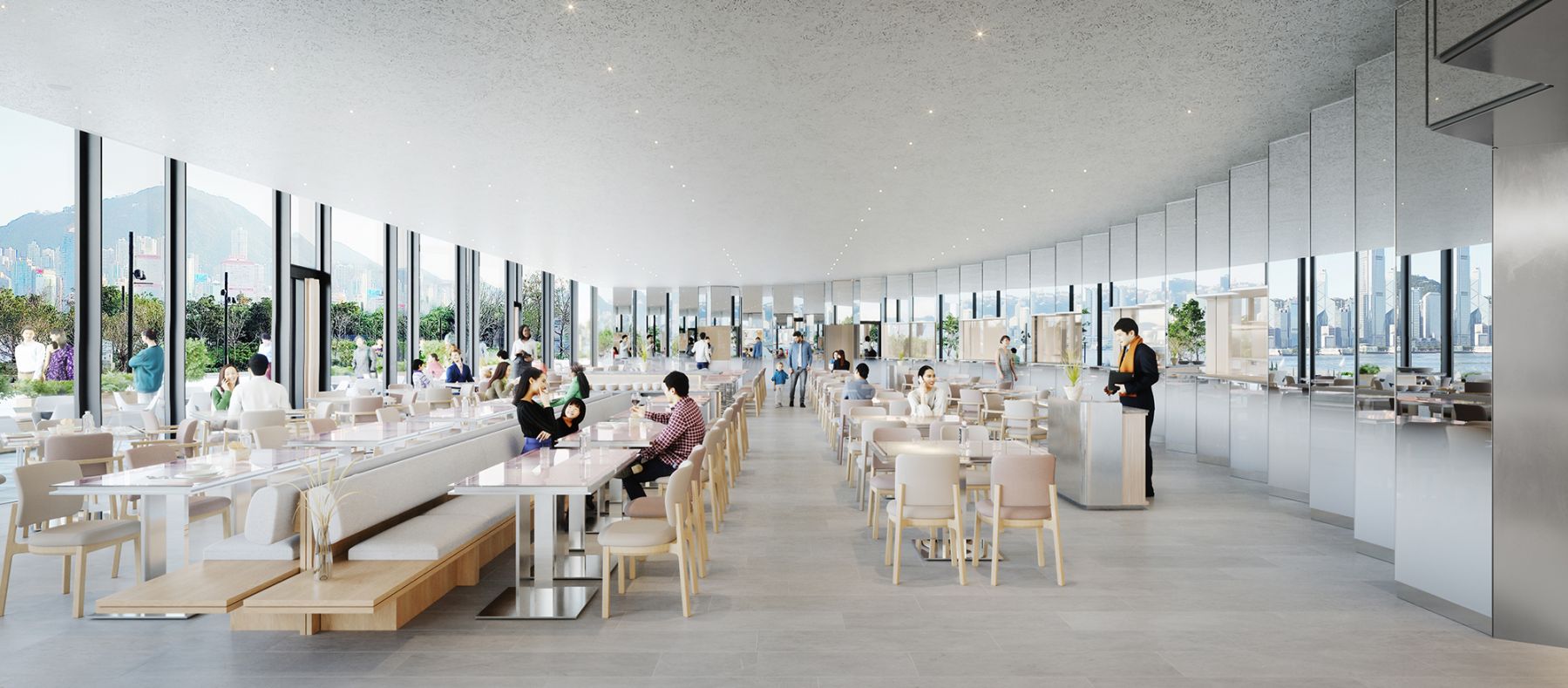Mosu’s chef-founder Sung Anh reveals what will change when he brings his cuisine to the landmark art institution next year
Ahead of its imminent and much-anticipated opening on November 12, M+, the landmark new institution for art, architecture and design in the West Kowloon Cultural District, has announced the two headlining restaurants that will underpin its culinary offerings. With the museum’s promise of becoming “Asia’s first global museum of contemporary visual culture”, the two restaurants will be operated by Lai Sun Dining—the group responsible for the likes of 8½ Otto e Mezzo Bombana, China Tang, and Masa Hong Kong—hoping to attract some of the half a million visitors that are projected to visit in the museum's first six months.
The first of the concepts is ADD+, a ground-floor venue facing the harbour that stands for “All Day Dining”. Designed to welcome museum visitors over the course of the day, ADD+ features a restaurant, full-service bar, and a grab-and-go section headed by Daniel Chan, most recently the executive chef at Hotel Alexandra. The 10,000-square-foot interior was conceived by Otto Ng of LAAB Architects to emphasise levity. An all-encompassing panorama of Victoria Harbour wraps around the entire inner perimeter thanks to an innovative zig-zagging mirror wall that reflects the view back even at diners facing away from the harbour.
See also: Meet Otto Ng, The Architect Behind Two New Restaurants Set To Open at M+ Museum This Year
The second of the two venues, Mosu Hong Kong, is ensconced at the meeting point of the third-floor garden level with the 14-storey tower rising above the podium of M+. As the first international outpost of the two-Michelin-starred Mosu Seoul, this Korean fine dining restaurant is the latest continuation of chef-founder Sung Anh's perambulatory career thus far.
First opened in San Francisco in 2015, Mosu quickly became a flashpoint among the city’s food lovers thanks to the innovative cuisine that took liberal influences from Anh’s Korean background, as well as his culture-spanning experiences working the kitchens of Beverly Hills omakase restaurant Urasawa, The French Laundry, Benu, and Moroccan restaurant Aziza.
In 2017, Anh moved Mosu to Seoul to be closer to his wife and two children, where he began incorporating even more Korean produce and technique into the tasting menus. There, he debuted seemingly minimalist but laboriously made dishes that highlighted lesser-known ingredients—his burdock bark dish is a signature, where a square of burdock bark is coated in syrup and dehydrated several times over to achieve an extreme crispness.
Related: Exclusive: Inside Hong Kong’s New M+ Museum—Asia's Answer To Tate Modern And MoMA

Mosu Hong Kong marks the restaurant’s third incarnation. “I fell in love with the city of Hong Kong when I first came here,” says Anh of his reason to open a location here. “I used to watch a lot of Hong Kong films as a young teenager who didn’t know how to speak English in the West—indirectly, I [felt like] I had a connection with Hong Kong.”
Much like during the transition from San Francisco to South Korea, diners should not expect to the cuisine at Mosu Hong Kong to be the same as what’s being served in Seoul. “I’ll try to bring something special, something new to the table,” explains Anh. “I really want to explore what is available in Hong Kong and kind of translate that into Mosu’s language.”
LAAB is also designing the interior of Mosu Hong Kong, parsing the restaurant’s placement at the intersection of the building’s giant LED facade with the garden level into the theme of 'digital meets nature'. Taking cues from Mosu Seoul’s austere aesthetic, the interior will predominantly feature raw and natural materials, whilst also incorporating indoor foliage and an advanced digital illumination system; meanwhile, a band of windows at one end of the restaurant will provide diners with a view of the museum's Focus Gallery, providing a direct link between the dining experience and contemporary art.
While both restaurants are currently under construction with an anticipated opening date in January 2022, Tatler Dining met with Anh at M+ to delve into his childhood connection with Hong Kong from afar, how the city’s dining culture differs from anywhere else, and why he’ll be leaving out his most famous dish from the menu when the restaurant opens.
See also: M+ Museum Announces Opening Date And Inaugural Exhibitions
